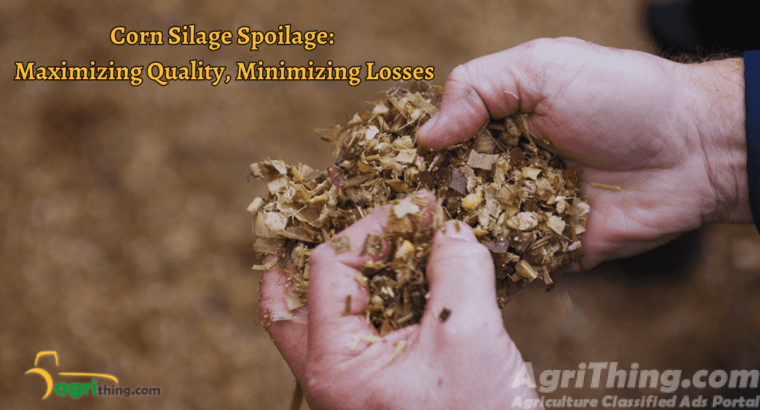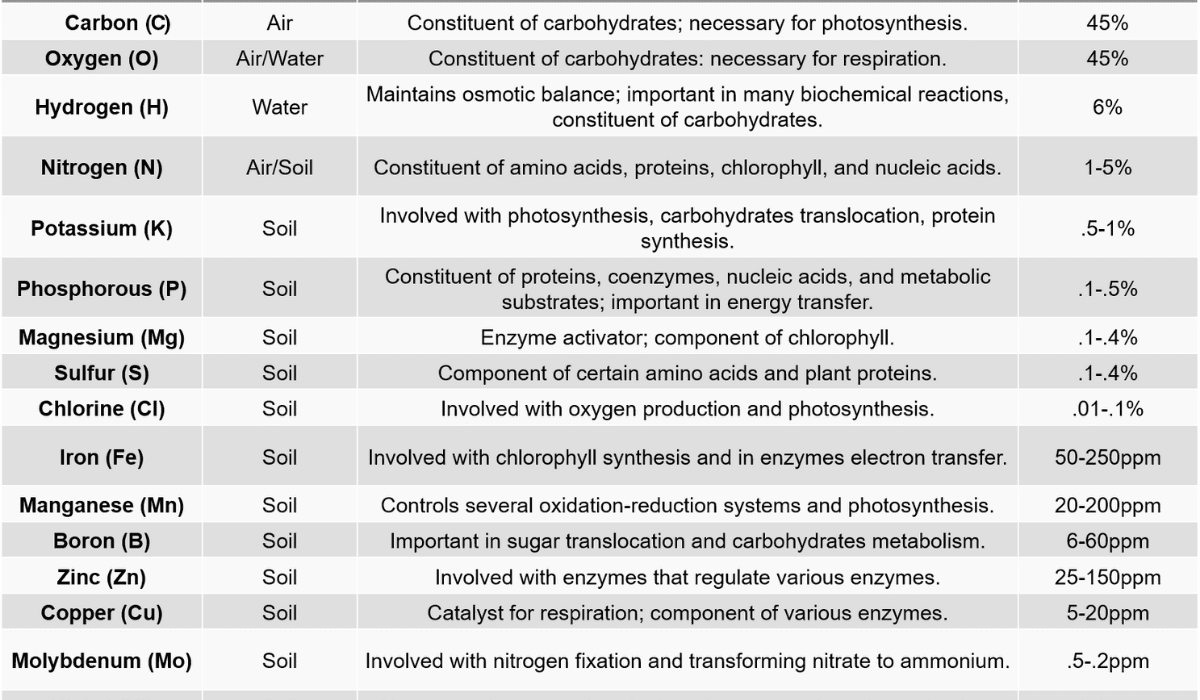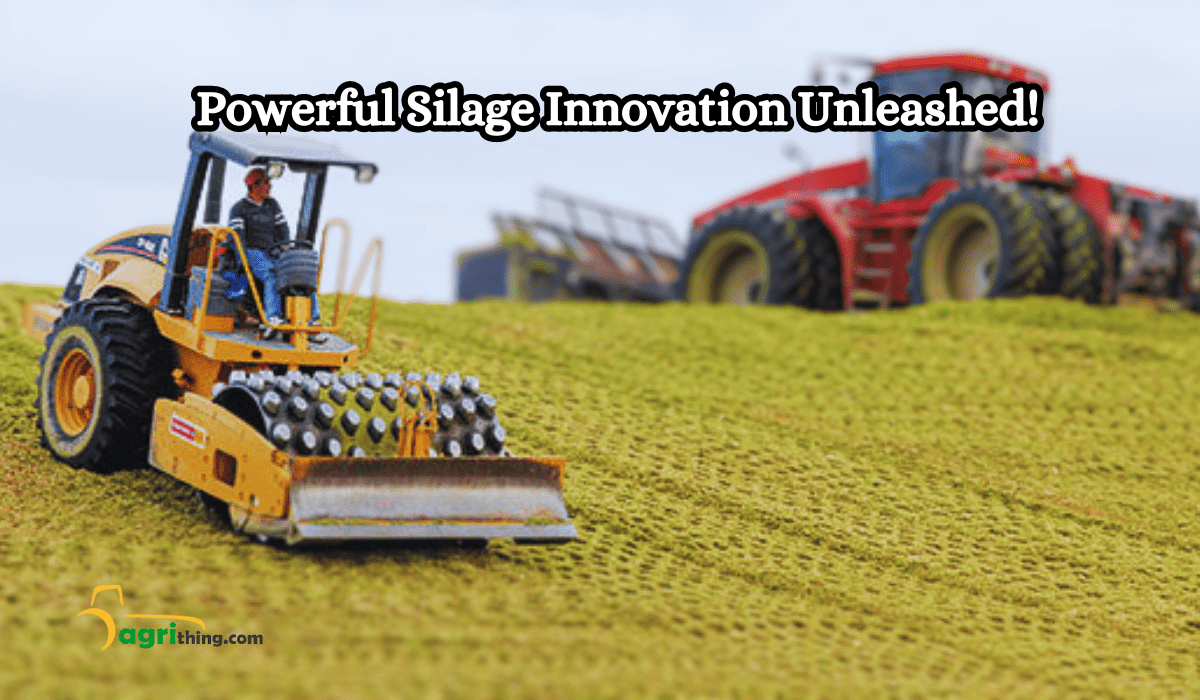Preventing Corn Silage Spoilage: Expert Tips and Techniques
Corn silage is important for feeding cows on farms, especially dairy cows. But it can go not good if we don’t care for it properly when we harvest, store, and feed it to the cows. In this article, we’ll learn why Corn silage spoilage, how to tell if it’s gone bad, what happens to the cows when they eat spoiled hay, and some helpful ways to stop it from spoiling.
Table of Contents
Importance of Corn Silage as Livestock Feed
Corn silage is highly valued as a feed source due to its high energy content and palatability. It is an essential component of dairy cow rations, providing the necessary energy for milk production. It is also used for beef cattle and other ruminant animals, contributing to their growth and overall health. However, if corn silage is not properly managed, it can undergo spoilage, leading to significant losses in nutritional value and potential health risks for livestock.


Enhancing Corn Silage Quality: Additives and Spoilage Prevention
| Additive | Function | Benefits |
|---|---|---|
| Inoculants | Promote fermentation | Faster and efficient fermentation |
| Acidifiers | Lower pH | Inhibit spoilage microorganisms |
| Antioxidants | Prevent oxidation | Retain nutrients, reduce nutrient loss |
| Preservatives | Inhibit spoilage | Prolong storage life, reduce spoilage |
| Absorbents | Absorb moisture | Prevent mold growth, improve stability |
| Oxygen barrier films | Minimize oxygen exposure | Reduce aerobic deterioration |
| Biological additives | Enhance fermentation | Improve silage quality, reduce losses |
Top Strategies for Preventing Corn Silage Spoilage
Harvesting at the Right
Harvesting corn at the right stage of maturity. If we wait too long, the moisture content can be too high, leading to spoilage. Harvesting at the ideal moisture level helps maintain the quality of the hay.
Proper Packing and Sealing
When storing corn silage, we need to pack it tightly and seal it well. This reduces the exposure to oxygen, which can cause spoilage. Special equipment like a silage compactor helps create compact and airtight storage.
Adequate Fermentation
Managing the fermentation process is key. We must ensure the corn silage ferments properly by maintaining the right temperature and moisture levels. This creates an environment that
helps preserve the nutrients and prevent spoilage.
Regular Monitoring
Regularly checking the stored silage is crucial. We should look for signs of spoilage, such as mold growth or bad odors. If we spot any issues, we can immediately prevent further spoilage.
Using Silage Additives
Sometimes, adding special substances called silage additives can help prevent spoilage. These additives contain helpful bacteria that promote good fermentation and inhibit the growth of spoilage organisms.
Factors Leading to Corn Silage Spoilage
Several factors contribute to corn silage spoilage. Understanding these factors is crucial for preventing and managing spoilage effectively.
- Moisture Content: The moisture content of corn silage plays a critical role in determining its stability during storage. Silage with high moisture levels promotes the growth of spoilage organisms such as molds and yeasts. On the other hand, excessively dry silage can result in poor fermentation and nutrient losses.
- Oxygen Exposure: Oxygen exposure is another significant factor that can lead to corn silage spoilage. Oxygen promotes the growth of aerobic spoilage organisms, which can cause heating and deterioration of the silage. Proper packing and sealing of silage storage structures are essential to minimize oxygen ingress.
- Fermentation Process: The fermentation process itself can contribute to spoilage if not adequately managed. Insufficient fermentation can result in high pH levels, allowing spoilage organisms to thrive. On the other hand, excessive fermentation can lead to the production of undesirable compounds, affecting the palatability and nutritional quality of the silage.
Common Types of Corn Silage Spoilage
Several types of spoilage can occur in corn silage, and it is essential to recognize and address them promptly.
Mold Growth
Mold growth is a prevalent type of corn silage spoilage. Mold colonies can develop on the surface of silage and release harmful mycotoxins that pose health risks to livestock. Moldy silage is characterized by visible mold patches, often appearing green, white, or black, and musty odors.
Yeast Fermentation
Yeast fermentation is another form of corn silage spoilage. Yeasts are aerobic organisms that can grow in the presence of oxygen. They can cause excessive heating, leading to nutrient losses and reduced palatability. Yeast-fermented hay may have a sweet or alcoholic odor.
Heating
Heating is a sign of spoilage caused by microbial activity. It occurs when aerobic organisms consume oxygen, releasing heat as a byproduct. Heating can lead to nutrient degradation, reduced feed intake, and increased risk of mycotoxin production.
Identifying Spoiled Corn Silage
It is crucial to identify spoiled corn silage to prevent its negative impact on livestock health and performance. The following indicators can help in recognizing spoiled silage
Visual Indicators
Visually inspect the hay for any visible signs of spoilage. Look for mold growth, off-color patches, clumps, or other abnormal appearances. Pay attention to the surface and the deeper layers of the hay.
Smell and Texture
Spoiled corn silage often has distinct odors and textures. Moldy hay may have a musty or earthy smell, while yeast-fermented silage can have a sweet or alcoholic odor. The texture may be slimy or overly dry, indicating spoilage.
Effects of Spoiled Corn Silage on Livestock
When corn silage goes bad, it can cause many problems for the farm animals. Knowing these effects is important to take care of them and keep them safe.
- Less Nutrition: Hay that has gone bad has fewer good nutrients than fresh silage. When bad stuff grows in it, the nutrients get lost, making the animals unhealthy. They might need to get everything necessary to grow and be strong.
- The trouble with Digestion: Eating spoiled corn silage can make the animals to have tummy troubles. The mold that grows on bad silage can make it hard for them to digest and get the good stuff out of their food. This can weaken them, grow slowly, and even get sick more easily.
- More Risk of Getting Sick: Bad silage can also make the animals more likely to get sick. The moldy hay can have a harmful substance called mycotoxins that can hurt the liver, immune system, and other body parts. This can make them feel bad and not be as healthy as they should be.


Preventive Measures for Corn Silage Spoilage
Preventing corn silage spoilage begins with implementing proper practices during the harvesting, storage, and feeding processes.
Optimal Moisture Content
Monitor the moisture content of corn forage during the ensiling process. Aim for a moisture content between 60% and 70% to ensure optimal fermentation and minimize the risk of mold and yeast growth.
Proper Packing and Sealing
Pack the harvested corn silage tightly into storage structures to eliminate air pockets and reduce oxygen ingress. Use suitable packing equipment and techniques to achieve high-density packing. Seal the silo properly to minimize air exposure. Regularly inspect silage storage structures for any signs of damage or air leakage. Repair and maintain the silo to ensure airtight conditions. Implement proper feed-out procedures to minimize oxygen exposure during silage removal.
Managing Spoiled Corn Silage
Despite preventive measures, some degree of spoilage may still occur. Managing spoiled corn silage effectively is crucial to minimize losses and potential risks to livestock.
Assessing the Extent of Spoilage
Regularly monitor the quality of stored silage to identify any signs of spoilage. Assess the extent of spoilage by visually inspecting the silage and conducting laboratory tests to analyze key parameters such as pH, dry matter content, and mycotoxin levels.
Removing and Reusing Unaffected Portions
If only a portion of the silage is spoiled, remove the affected sections carefully. Take extra precautions to prevent cross-contamination with unaffected silage. The unaffected portions can be used for feeding, while spoiled silage should be appropriately disposed of.
Proper Disposal of Spoiled Silage
Spoiled corn silage should be disposed of properly to avoid environmental contamination and potential health hazards. Composting can be a suitable option for managing spoiled silage. Follow local regulations and guidelines for safe disposal.
Mitigating Corn Silage Spoilage: Monitoring and Solutions
| Aspect | Monitoring Methods | Solutions |
|---|---|---|
| Moisture content | Regular moisture testing | Adjust harvest timing, improve packing density |
| Temperature | Thermometer monitoring | Ensure proper compaction, monitor storage temperature |
| pH level | pH testing | Add acidifiers if necessary, improve fermentation |
| Oxygen exposure | Oxygen barrier films | Use airtight storage, minimize oxygen ingress |
| Presence of molds | Visual inspection, lab analysis | Improve packing density, use mold inhibitors |
| Nutrient preservation | Nutrient preservation | Optimize fermentation, prevent nutrient loss |
Best Practices for Corn Silage Storage
Proper storage practices are crucial for maintaining the quality and stability of corn silage.
Covering and Sealing Silos
Cover silos with appropriate oxygen barrier films to minimize oxygen exposure. Use high-quality silage covers that fit tightly and prevent air ingress. Regularly inspect and repair covers to ensure their effectiveness.
Using Oxygen Barrier Films
Consider using oxygen barrier films or oxygen-limiting technologies to further reduce oxygen exposure. These films create a barrier against oxygen ingress, enhancing the stability and longevity of the stored silage.
Controlling Rodent and Bird Infestations
Rodents and birds can damage silage covers and introduce contaminants. Implement effective measures to control rodent and bird populations around storage structures. Regularly inspect and repair any damage to prevent air leakage and spoilage
Alternative Options for Corn Silage Spoilage
When corn silage has spoiled to an extent that makes it unsuitable for feeding, alternative options can be considered.
Composting
Spoiled silage can be composted to convert it into organic fertilizer. Proper composting processes should be followed to ensure complete decomposition and eliminate any potential pathogens or toxins.
Feeding to Non-lactating Animals
If the spoiled silage is deemed safe for consumption by non-lactating animals, it can be used as a feed source for them. However, careful monitoring of animal health and performance should be conducted to ensure no adverse effects occur.
Conclusion
Preventing and managing Corn silage spoilage is crucial for maintaining the quality and safety of livestock feed. Farmers can reduce the risk of spoilage by using proper harvesting techniques, controlling moisture levels, packing and sealing effectively, and regularly monitoring the silage. It’s important to identify spoilage in corn silage, assess its impact, and dispose of it correctly to protect the health and productivity of the herd. Prioritize safety when handling spoiled corn silage to ensure the well-being of both humans and animals.
Frequently Asked Questions (FAQ’s)
Can spoiled corn silage be salvaged and used for feeding?
If only a small portion of the silage is spoiled and the nutritional quality is still acceptable, it can be used for feeding non-lactating animals. However, careful monitoring of animal health is necessary to ensure no adverse effects occur.
How can I prevent mold growth in corn silage?
Properly packing and sealing the silage, optimizing moisture content, and reducing oxygen exposure are key measures to prevent mold growth in corn silage. Regular monitoring and quick identification of any signs of spoilage are also crucial.
What are the signs of heating in corn silage?
Heating in corn silage is often accompanied by an increase in temperature. It can be detected by feeling the silage for warmth or by using temperature probes. Heating may also result in a sweet or musty odor.
How often should I sample and test my corn silage?
Sampling and testing should be conducted regularly throughout the storage period. It is recommended to sample every few weeks initially and then adjust the frequency based on the stability and previous testing results.
Can spoiled corn silage be used as fertilizer?
Yes, spoiled corn silage can be composted and used as organic fertilizer. Proper composting techniques should be followed to ensure complete decomposition and eliminate any potential pathogens or toxins.
Related Articles
Want to purchase top-quality corn silage. Visit our Agricomplex website. Easy and help full in formation just for you!
People Also Asked
How does corn silage spoilage occur?
Corn silage spoils when certain microorganisms, like molds and yeasts, grow and eat the nutrients. This causes the loss of nutrients, creates heat, and produces mold toxins. Improper packing, too much moisture, exposure to oxygen, and insufficient fermentation can all spoil it.
What are the signs of corn silage spoilage?
When corn silage spoils, there are some signs to watch out for. These include a bad smell, mold growth, heating, a slimy texture, too much liquid, and color changes.
How can I prevent corn silage spoilage?
Prevent corn silage spoilage by tightly packing and sealing, using additives, controlling temperature, employing oxygen barrier films, regular inspection, and maintaining hygiene.
What is the impact of corn silage spoilage on livestock?
Spoiled corn silage harms livestock. It makes them eat less, reduces how well they use nutrients and lowers their performance. If the spoiled silage contains mycotoxins, it can cause health issues and weaken their immune system.
Can spoiled corn silage be used for any purpose?
Spoiled corn silage has limited purposes. It can be used as compost or added to the soil in specific situations. However, feeding it directly to livestock is not advisable because it has fewer nutrients, may contain mycotoxins, and isn’t appetizing to them.




